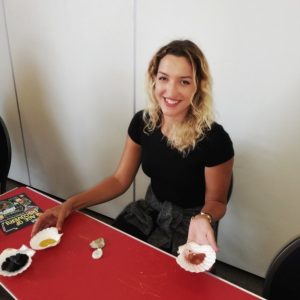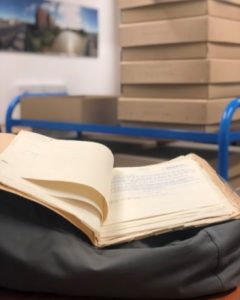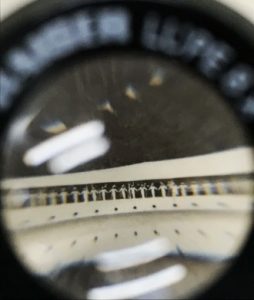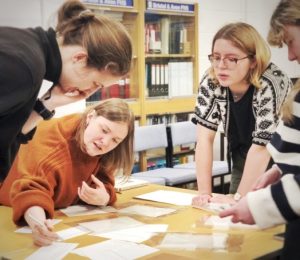First impressions of the British Empire and Commonwealth Collection
Posted on by Alice Bush.
by Eve Andreski, Documentation Assistant

Hello! I am a long-term volunteer and previous museum front-of-house team member. I began working with the British Empire and Commonwealth Collection (BECC) at the end of January. This is when generous funding from Bristol Museums Development Trust enabled a temporary Documentation Assistant to be appointed.
As I approach three months with the team, I am starting to get to grips with the collection. Now feels like the perfect time to reflect on what I have learned so far. And to recount some of my favourite experiences!
 First of all, the collection is huge: BECC houses half a million photographs alone!
First of all, the collection is huge: BECC houses half a million photographs alone!
It includes material from all over the world. After all, at its peak, the British Empire spanned nearly a quarter of the world’s land surface.
BECC material includes everything from cassette tapes to glass negatives. The content addresses topics including natural history, engineering and development, military and commercial endeavours, and domestic life.
I won’t try to summarise further, the best thing would be to dive in and have a browse of the online catalogue!
 Aside from the scale, I have found that sometimes a moment in time will captivate or devastate you. A caption here might tell you of accepted racist colonialist attitudes. A phrase there may allude to conflicts without mentioning them directly.
Aside from the scale, I have found that sometimes a moment in time will captivate or devastate you. A caption here might tell you of accepted racist colonialist attitudes. A phrase there may allude to conflicts without mentioning them directly.
There is an almost dizzying aspect to an archive like this. As a whole, it can be used to tell you about a global political situation. But this is only possible as it contains millions of moments that make up the whole. It’s a bit like being a detective! I am often trying to read tricky handwriting, or identify locations or people in photographs to link them to the bigger picture.
 I’ve particularly enjoyed reading the enquiries that the team receives, and building the confidence to answer them myself. These come from all over the world and cover a huge range of topics.
I’ve particularly enjoyed reading the enquiries that the team receives, and building the confidence to answer them myself. These come from all over the world and cover a huge range of topics.
From a high school student in the USA needing help with evidence for their essay to an academic in Nigeria researching the infrastructure of Lagos… It’s almost too easy to get lost in them!
It’s been a jam-packed three months, with many outreach events. I love meeting new people so this has been a highlight for me. I was particularly excited to chat with Warda Ibrahim, who is the history project assistant for the Migration, Heritage and Belonging Project at M Shed.
As a recent graduate, it’s also been great to meet the students who have attended workshops and presentations. I had expected to meet history students. Yet, so far they have been scholars of Geography, Anthropology and Education! It has been so exciting to hear fresh new approaches to the collection.
I think this shows how relevant the collection is to such a wide range of fields. And how the impact of the British Empire reverberates to this day.
__
BECC material (both objects and documents) is accessible through the Bristol Archives search room, which is open Tuesdays – Fridays, 9.30am – 4.30pm, and the first two Saturdays of every month from 10am – 4pm. You can plan your visit on the Bristol Archives website.
You can also email any enquiries to the archives team by using our contact form. We would love to hear from you, and assist where possible with your research.
Bristol Museums Development Trust (BMDT) is an independent registered charity that supports the work of Bristol’s museums and archives within Bristol City Council.